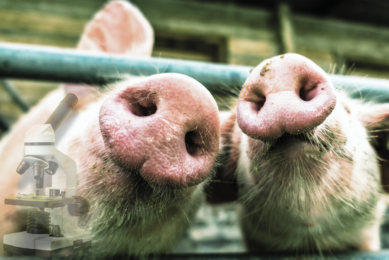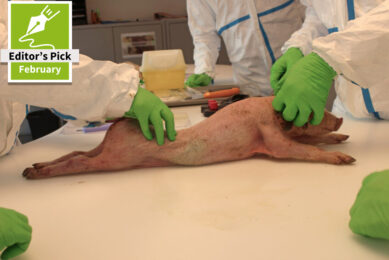Phytogenics: Modulating the gut for health and productivity
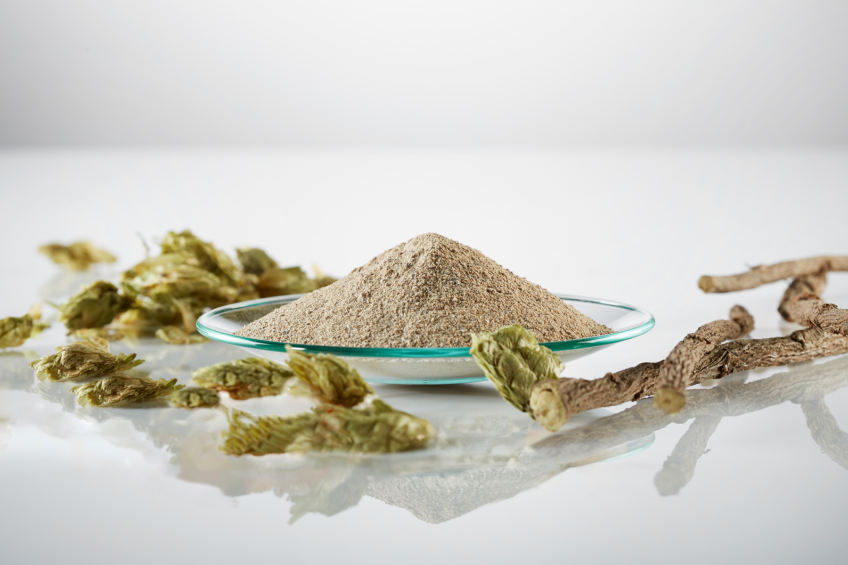
Phytogenics represent a targeted, multifaceted approach to modulating gut microbiota. Working in different parts of the digestive system they offer many benefits. Phytogenics are more selective, they specifically target harmful bacteria without disturbing the beneficial microbes, unlike AGPs.
WORLD OF MICROBES SPECIAL 2024 – read all articles
The concept that “outer reality mirrors inner reality” resonates strongly in animal farming, especially when considering the critical role of the gut in animal health. Within the gut microbiome, trillions of microbes play an essential role in sustaining animal well-being. To support optimal growth, efficient nutrient absorption, and robust immune function, a balanced gut microbial community is essential. However, when this balance tips in favour of harmful microbes, digestion suffers, immunity weakens, and the risk of illness increases, ultimately leading to financial losses. For over 50 years, antimicrobial growth promoters (AGPs) were a staple in animal feed, used to enhance growth by modulating gut microbes. Yet, mounting concerns about antibiotic residues in animal products, along with the rise of antibiotic-resistant bacteria, have underscored the need for safer, more sustainable alternatives to AGPs.
Balanced gut, balanced life
The gut ecosystem is intricate, teeming with microorganisms that have evolved alongside their animal hosts for millions of years. Each segment of the gut hosts a unique microbial community, and these microbes vary across the animal’s life span. This diversity underscores the significant influence that the microbiome exerts on both digestive health and overall animal well-being. For instance, in poultry, the microbial environment evolves from the moment a chick hatches. Initially, the chick acquires microbes from the hen, but the environment in the poultry house as well as the feed play a crucial role in shaping the population of microbes in the chick’s gut.
Microbes not only interact with one another but also with the animal itself. Some bacteria adhere to gut linings or are taken up by immune cells, directly impacting the host. Others produce metabolites, like short-chain fatty acids (SCFAs), that influence processes such as gut health, immune response, inflammation, and energy metabolism. A balanced microbiome supports animal health, while an imbalance can lead to adverse health effects.
Neither black nor white
Gut health is not simply a matter of good versus bad bacteria. Some microorganisms often deemed harmful can actually play beneficial roles under certain conditions. Similarly, microbes typically seen as helpful can cause problems if they grow too much or end up in the wrong place. So, determining which bacteria are “good” or “bad” isn’t always clear-cut. It depends on how they interact with each other and the animal’s body, but establishing and maintaining a balanced gut flora is essential for animal growth and performance. Various factors, such as temperature, feed quality, hygiene conditions, and the use of antibiotics can upset this balance and cause dysbiosis. Antibiotic growth promoters (AGPs) are of special concern in animal nutrition. They are intended to help animals grow faster and perform better. However, as they eradicate a wide range of bacteria, including those that are beneficial to animal health, the resulting microflora imbalance may cause impaired nutrient absorption, elevated inflammation, a compromised immune system, and heightened disease susceptibility. Over time, the use of AGPs can also lead to the development of antibiotic-resistant bacteria, making infections harder to treat. To avoid these issues, restore gut health and reduce inflammation, new and innovative strategies are needed. These concerns have led to AGP bans in several countries, and the demand for alternatives continues to grow. One promising solution is using phytogenics, natural substances found in plants. Phytogenics are gaining attention as a safe and effective way to correct gut microbes imbalance and improve overall animal well-being without the harmful effects associated with AGPs.
Figure 1 – Relative abundance of selected bacteria in caecal digesta of broilers at 42 days of age.
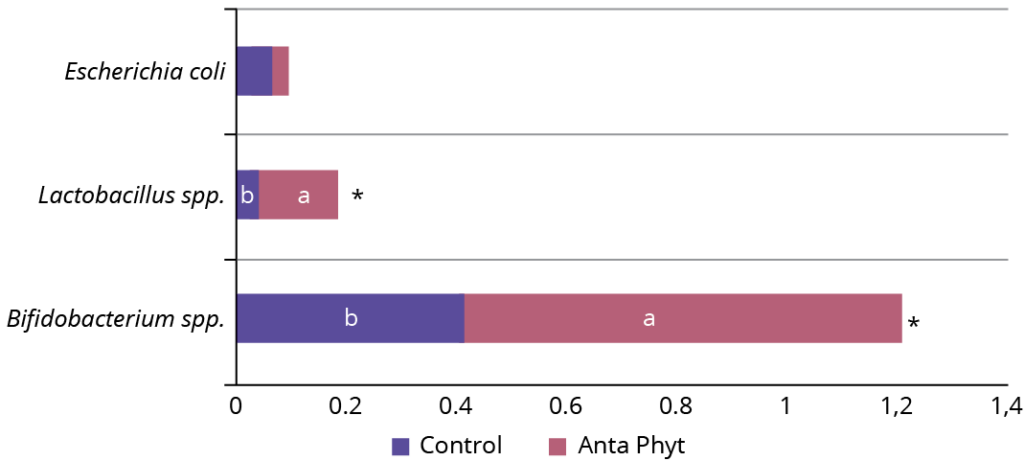
Selective and safe
Phytogenics represent a targeted, multifaceted approach to modulating gut microbiota. They work in different parts of the digestive system, offering multiple benefits. In the small intestine, phytogenics mainly help to fight harmful bacteria that can cause infections. In the colon, they behave like prebiotics, which means they support the growth of beneficial bacteria that help with digestion and overall health. Unlike AGPs, which kill a wide range of bacteria (both good and bad), phytogenics are more selective. They specifically target harmful bacteria without affecting the beneficial microbes, maintaining a healthier gut environment. Additionally, phytogenics have anti-inflammatory, antioxidant, and immune-boosting properties, thereby supporting performance and health of animals in a sustainable way.
A leading example is Anta Phyt, a phytogenic complex designed to boost the growth and health of poultry, swine and ruminants. In commercial settings, it improved the growth of chickens, especially during their critical development stages. In a 42-day trial with 1,155 broilers, the use of Anta Phyt resulted in an increase in beneficial bacteria like Bifidobacterium and Lactobacillus, while reducing harmful E. coli levels compared to chickens not treated with the product (Figure 1 and 2). By promoting a healthy balance of gut bacteria and strengthening the digestive system, Anta Phyt helps improve both the health and growth efficiency of poultry, offering livestock producers a natural and effective way to increase productivity.
Figure 2 – European production efficiency factor.
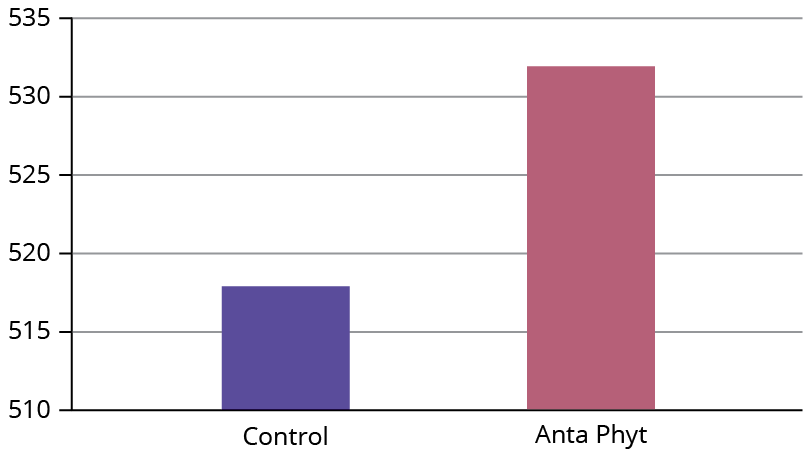
Growing smarter, farming better
Anta Phyt stands as a testament to the potential of phytogenics to bridge the gap between profitability and sustainability. By fostering a balanced gut microbiome, this natural solution enhances animal growth and well-being without the risks and commercial limitations associated with antibiotic use as growth promoter. Its application in commercial farming has demonstrated that healthier livestock and reduced environmental impact are not mutually exclusive goals. With the product, livestock producers have a robust, natural alternative to traditional AGPs. It not only supports animal health and performance but also aligns with sustainable and profitable farming practices. Join the movement towards a future where animal welfare and productivity go hand in hand. Discover how phytogenics can transform your livestock production today and take the first step toward smarter, more sustainable farming.




